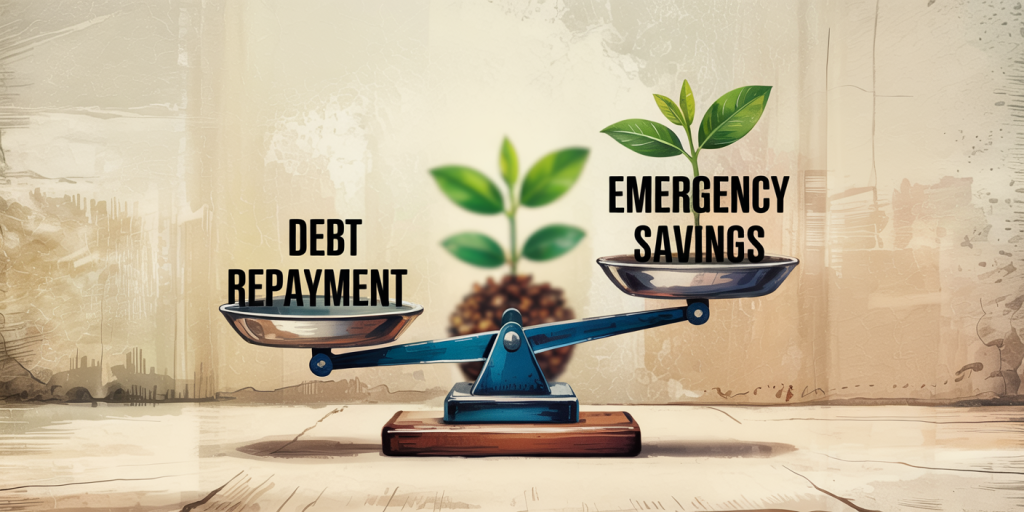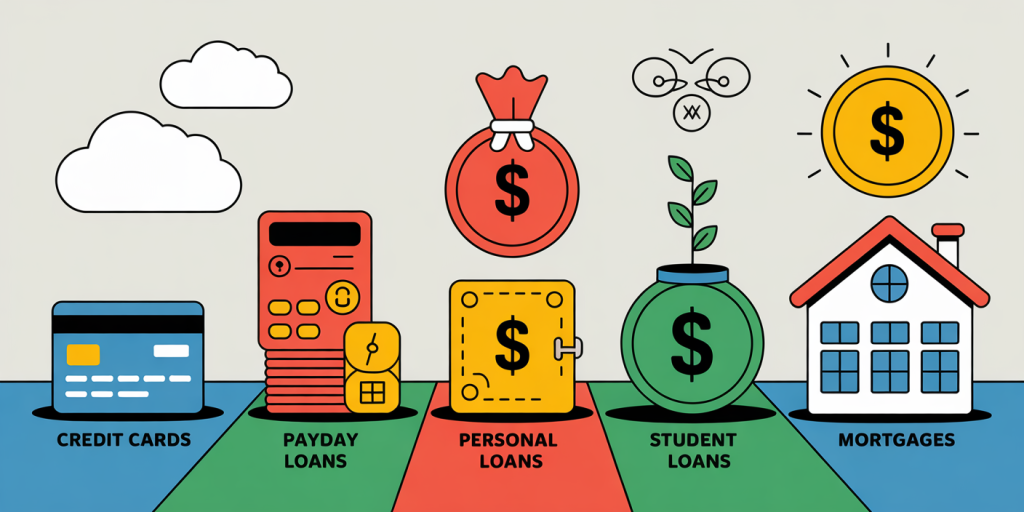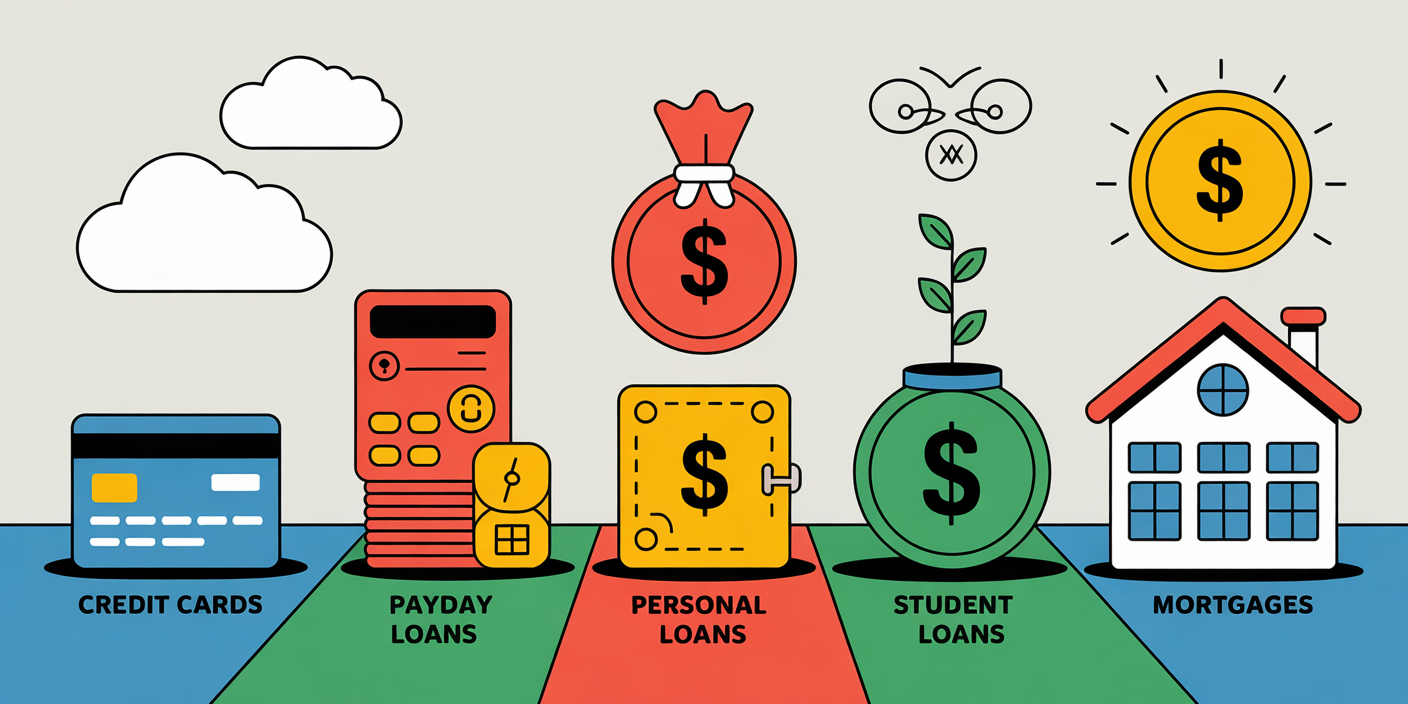Should You Pay Off Debt or Save First? Here’s How to Decide
Managing personal finances often leads to a crucial dilemma: should you focus on paying off debt or prioritize saving money first? This question is increasingly relevant as interest rates fluctuate and economic uncertainties persist. The decision is not one-size-fits-all—various factors such as the type of debt, interest rates, personal risk tolerance, and financial goals all play a role. This article explores practical strategies backed by expert insights to help you make an informed choice.

Understanding the Debt vs. Savings Dilemma
Before diving into specific strategies, it’s essential to understand why this dilemma exists. On one hand, paying off debt reduces your liabilities and can save you money on interest payments, especially with high-interest debts such as credit cards. On the other hand, building savings, particularly an emergency fund, provides a financial safety net and peace of mind, decreasing the need to incur new debt during unforeseen expenses.

Consider a typical case: Jane has $5,000 in credit card debt at an 18% annual interest rate and $1,000 in her savings account earning 1% interest. Every month, Jane wonders if extra funds should go toward accelerating debt repayment or beefing up her savings. In this context, prioritizing her debt typically saves more money over time due to high interest accumulation. However, without a sufficient emergency fund, she risks going further into debt due to unexpected costs such as car repairs or medical bills.
Evaluating the Types of Debt: High Interest vs. Low Interest
Not all debt is created equal, and properly categorizing debt is key to deciding on repayment versus saving. High-interest debt, such as credit cards, payday loans, or some personal loans, often carries rates exceeding 15-20%. These debts compound quickly, making early repayment financially advantageous.

In contrast, low-interest debts, such as many mortgages or student loans, usually have interest rates below 5%. In some cases, student loans can even offer tax advantages or income-based repayment options that reduce effective costs.
| Debt Type | Typical Interest Rate | Suggested Priority | Notes |
|---|---|---|---|
| Credit Cards | 15% – 25% | Pay off quickly | High compounding interest; avoid accruing |
| Payday Loans | 300%+ | Pay off immediately | Extremely high rates; trap users in debt |
| Personal Loans | 7% – 15% | Pay off after high-interest debts | Depends on rate and loan terms |
| Student Loans | 3% – 7% | Consider saving or investing simultaneously | Possible forgiveness programs; low rates |
| Mortgages | 3% – 6% | Save while making regular payments | Low-interest, long-term debts |
For example, the National Foundation for Credit Counseling (NFCC) reports that roughly 60% of Americans have credit card debt with an average interest rate of 16.28%. For homeowners, mortgage rates remain historic lows near 5%, tipping the scale toward focusing on savings over accelerated mortgage payoff.
The Role of Emergency Savings and Financial Stability
An emergency fund acts as a financial buffer to cover unexpected expenses without resorting to debt. Financial advisors generally recommend setting aside three to six months’ worth of living expenses in an accessible savings account. This cushion stabilizes finances and reduces the likelihood of increasing debt burden during emergencies.
For instance, a real-life case by Fidelity Investments found that 53% of Americans didn’t have emergency savings to cover three months of expenses as of 2023. This statistic underscores why saving an emergency fund often takes priority.
If you currently have no savings, even modest monthly deposits toward this goal can prevent further debt cycles. Take the example of Mark, who owed $3,000 on his credit card and had nothing saved. By contributing $200 a month, he built a $1,200 cushion within six months. This fund provided peace of mind while continuing to pay minimum debt amounts, enabling a more balanced and sustainable financial plan.
Comparing Financial Impact: Paying Off Debt vs. Saving
A key aspect of deciding revolves around comparing the financial gains or losses from paying off debt versus saving. Here’s an example scenario: Debt amount: $5,000 credit card with 18% APR Monthly payment possible: $500 Savings yield: 2% annual interest
Option 1: Pay Off Debt First
If Jane focuses all $500 on paying down the credit card debt, she can clear it in roughly 11 months, saving hundreds in interest payments. After clearing debt, she can redirect the $500 toward savings.
Option 2: Build Savings First
If Jane puts $300 toward savings and $200 toward minimum debt payments, the debt will take over two years to pay off, costing more than $800 in interest, but she has a $1,500 emergency fund.
| Strategy | Time to Debt-Free | Interest Saved/ Paid | Emergency Fund Built | Total Net Worth Impact (Approximation) |
|---|---|---|---|---|
| Pay Debt First | 11 months | Saves ~$1,000 | $0 initially | Higher net worth after 1 year |
| Save First | >2 years | Pays ~$1,200 | $1,500 | Lower net worth but better liquidity |
This table illustrates that while paying off debt can save money in interest, the absence of an emergency fund may create financial vulnerability, potentially forcing new debt.
Psychological and Behavioral Considerations
The decision isn’t purely numerical; psychology plays a vital role. Debt can be a major source of stress, and paying it off early often leads to improved mental well-being and better financial discipline. In a 2022 study by the American Psychological Association, individuals reporting higher debt levels also reported increased anxiety and sleep disturbances.
Conversely, saving money generates a sense of security and empowerment. Even small achievements in building savings can motivate individuals to maintain positive financial habits.
For example, Sarah, a millennial professional, chose to split her extra funds equally between a debt snowball repayment plan and her savings account. She found that seeing her debt balance reduce each month while her savings grew gave her motivation to continue budgeting effectively.
Recognizing where you stand mentally and emotionally can guide your approach, balancing financial optimization with personal motivation.
Tailoring the Strategy Based on Income Stability and Goals
Income stability dramatically affects whether paying off debt or saving should take precedence. If your income is predictable and steady, you might lean toward aggressive debt repayment, knowing you can handle emergencies.
However, in unpredictable employment situations or freelance work, building a larger savings cushion (even gradually) can provide the flexible buffer needed to manage variations in income.
Additionally, aligning your plan with long-term goals matters. For example, if purchasing a home or starting a business is on your horizon, saving for a down payment or startup capital might take precedence over non-mortgage debt repayment.
Using budgeting tools and consulting with financial planners can clarify priorities. The Consumer Financial Protection Bureau (CFPB) recommends reviewing budgets biannually to adjust saving and debt repayment plans as life circumstances evolve.
What Experts Are Saying: General Guidelines
Financial experts often endorse a hybrid approach: Build an initial emergency fund of at least $1,000 while making minimum debt payments. Focus on paying down high-interest debt aggressively. Once high-interest debts are cleared, increase savings toward mid-to-long-term goals. Maintain low-interest debt payments regularly unless refinancing is possible.
Dave Ramsey, a well-known personal finance expert, suggests a “debt snowball” method combined with a starter emergency fund to maximize psychological wins and practical risk coverage.
Meanwhile, economists like Suze Orman emphasize securing an emergency fund of 3-6 months’ expenses before rushing to pay debt, particularly for lower-interest loans.
Looking Ahead: Evolving Financial Priorities in Changing Times
As economic conditions shift, the balance between paying off debt and saving is continuously reassessed. Trends like rising inflation, fluctuating interest rates, and employment uncertainties may influence whether savings or debt repayment is more urgent.
Going forward, leveraging technology such as AI-driven budgeting apps or robo-advisors can provide personalized, real-time recommendations aligned with your financial situation and market changes.
Moreover, the rise of peer-to-peer lending and alternative financing means debt portfolios are becoming more diverse, requiring more nuanced strategies.
Adapting your approach means remaining flexible, informed, and ready to pivot between saving and paying off debt depending on current macroeconomic conditions and personal circumstances.
By regularly reviewing and adjusting your financial strategy, you can optimize your path toward financial freedom—whether that means eliminating debt quickly, building robust savings, or a balance of both.
